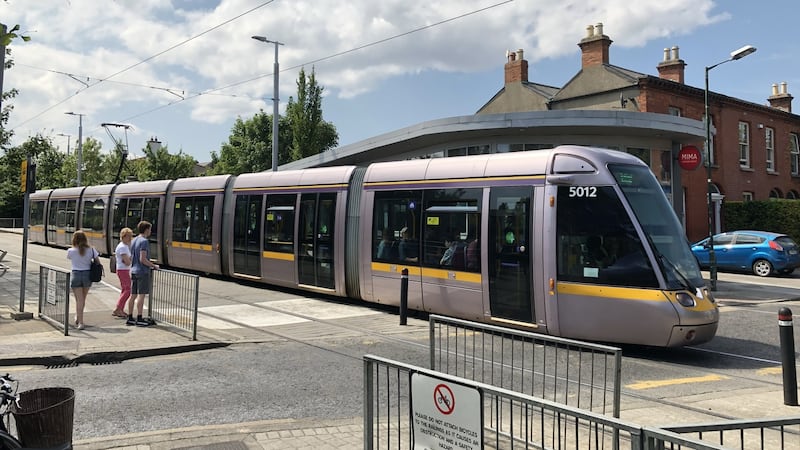The architects of the BusConnects scheme should not be too surprised their plans have come in for some criticism as virtually every transport initiative ever rolled out in the capital has been greeted with initial hostility.
Even the pedestrianisation of streets and the introduction of bikes were not spared the wrath of some.
For a trial period in the early 1970s, cars were banned from Grafton Street but concerns from councillors and local traders about the impact pedestrianisation would have on trade, and fears that an absence of cars would lead to an increase in crime and antisocial behaviour meant the street wasn't properly closed off until 1983.
It was repaved in 1988 and proved to be wildly successful as is evident from the high rents now attached to retail spaces on the street.
Doomed system
The rollout of a tram system for the city did not go smoothly either. Plans for a light rail system were first mooted in 1994 and within two years there were many voices saying any such system was doomed.
"Those responsible for this proposal appear to have little or no regard for the appalling disruption which will be caused during the installation stage, and the continued restriction of traffic on most of the centre city streets thereafter," one reader fumed on the letters page of The Irish Times in January 1996.
The author's concerns were echoed by opinion writers, most notably by former taoiseach and long-standing Irish Times columnist, the late Garret FitzGerald. "It seems to me, therefore, that on capacity grounds alone an on-street LRT system for Dublin is a grossly inadequate, and indeed counter-productive concept in terms of traffic management," he wrote in 1996 in one of an extensive series in which he outlined why the Luas was a bad idea.

It was the subject of inquires, hearings and an almost endless stream of reports before it eventually got the green light. After budget overruns and delays, the green line opened in the summer of 2004 with the red line opening in September.
The Cross-City project, which started running at the end of 2017, also came in for a huge volume of criticism for years, with grave concerns expressed late last year about longer trams and increased traffic congestion as a result of altered traffic light patterns.
The Luas has still proved to be successful and carried almost 40 million passengers last year.
The tunnel
The Dublin Port Tunnel was opened in December 2006 but not before it had come in for some withering criticism from politicians, business lobby groups and home owners living above it.
Even before a small hole had been dug, the tunnel was in hot water with road hauliers suggesting its roof would be too low to accommodate many heavy goods vehicles. Marino residents were concerned drilling would damage their houses and hundreds lodged compensation claims.
With the opening of the tunnel came a ban on trucks in the city centre. Again, this plan faced objections which led to delays in its implementation. Ibec and the Dublin Port Company said a ban on articulated lorries would make it harder for businesses to operate while truckers said traffic congestion on motorways around the tunnel would be a nightmare. Time past and it became clear that by any measure the city was better off.
Dublin Bikes
Not even the city bikes scheme was without naysayers. When Dublin Bikes hit the road in 2009 many said they would end up in the canals. By way of proof critics pointed to the unfortunate fibre glass cows. They comprised an art installation which had safely toured cities across Europe only to be vandalised and even decapitated with hours of going on display on Dublin streets. The fears were misguided, the bikes were safe and the scheme continues to grow.
One plan which attracted little criticism was the Liffey Boardwalk. Everyone loved the idea. The reality is, however, somewhat different.











